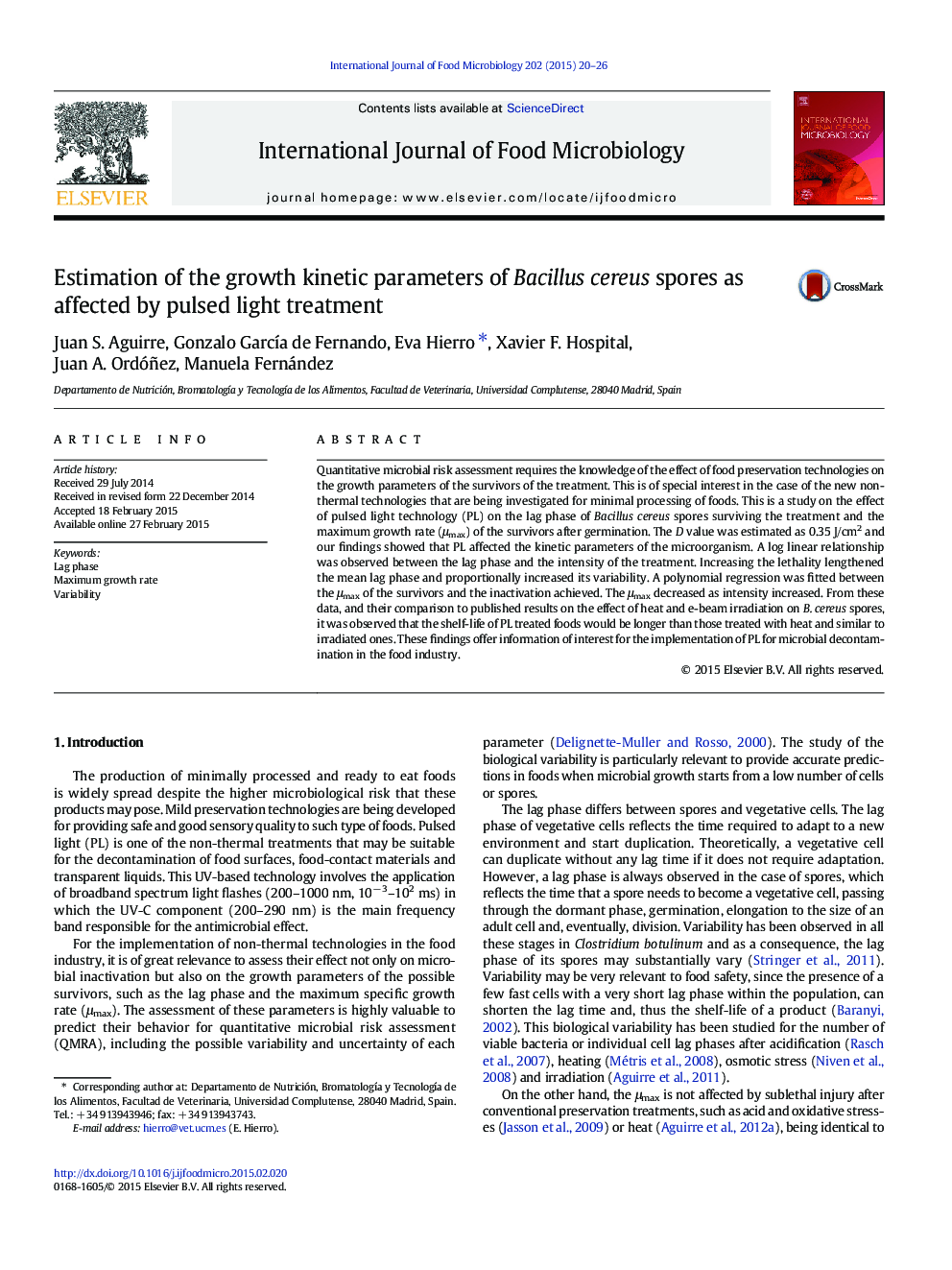| Article ID | Journal | Published Year | Pages | File Type |
|---|---|---|---|---|
| 4366531 | International Journal of Food Microbiology | 2015 | 7 Pages |
•The effect of PL on the growth parameters of Bacillus cereus spores was studied.•The lag phase increased with the intensity of the PL treatment.•The more intense the PL treatment, the higher the lag phase variability.•PL decreased the maximum specific growth rate of Bacillus cereus.
Quantitative microbial risk assessment requires the knowledge of the effect of food preservation technologies on the growth parameters of the survivors of the treatment. This is of special interest in the case of the new non-thermal technologies that are being investigated for minimal processing of foods. This is a study on the effect of pulsed light technology (PL) on the lag phase of Bacillus cereus spores surviving the treatment and the maximum growth rate (μmax) of the survivors after germination. The D value was estimated as 0.35 J/cm2 and our findings showed that PL affected the kinetic parameters of the microorganism. A log linear relationship was observed between the lag phase and the intensity of the treatment. Increasing the lethality lengthened the mean lag phase and proportionally increased its variability. A polynomial regression was fitted between the μmax of the survivors and the inactivation achieved. The μmax decreased as intensity increased. From these data, and their comparison to published results on the effect of heat and e-beam irradiation on B. cereus spores, it was observed that the shelf-life of PL treated foods would be longer than those treated with heat and similar to irradiated ones. These findings offer information of interest for the implementation of PL for microbial decontamination in the food industry.
